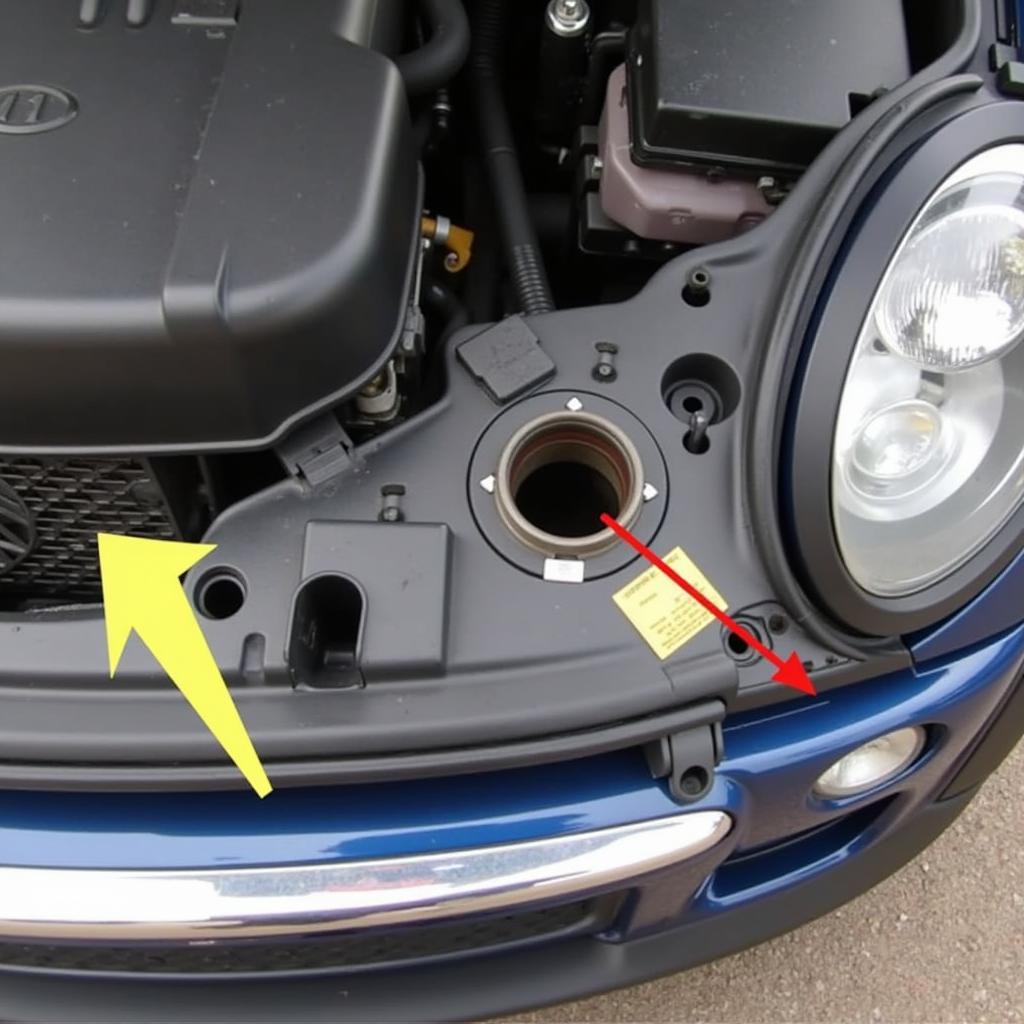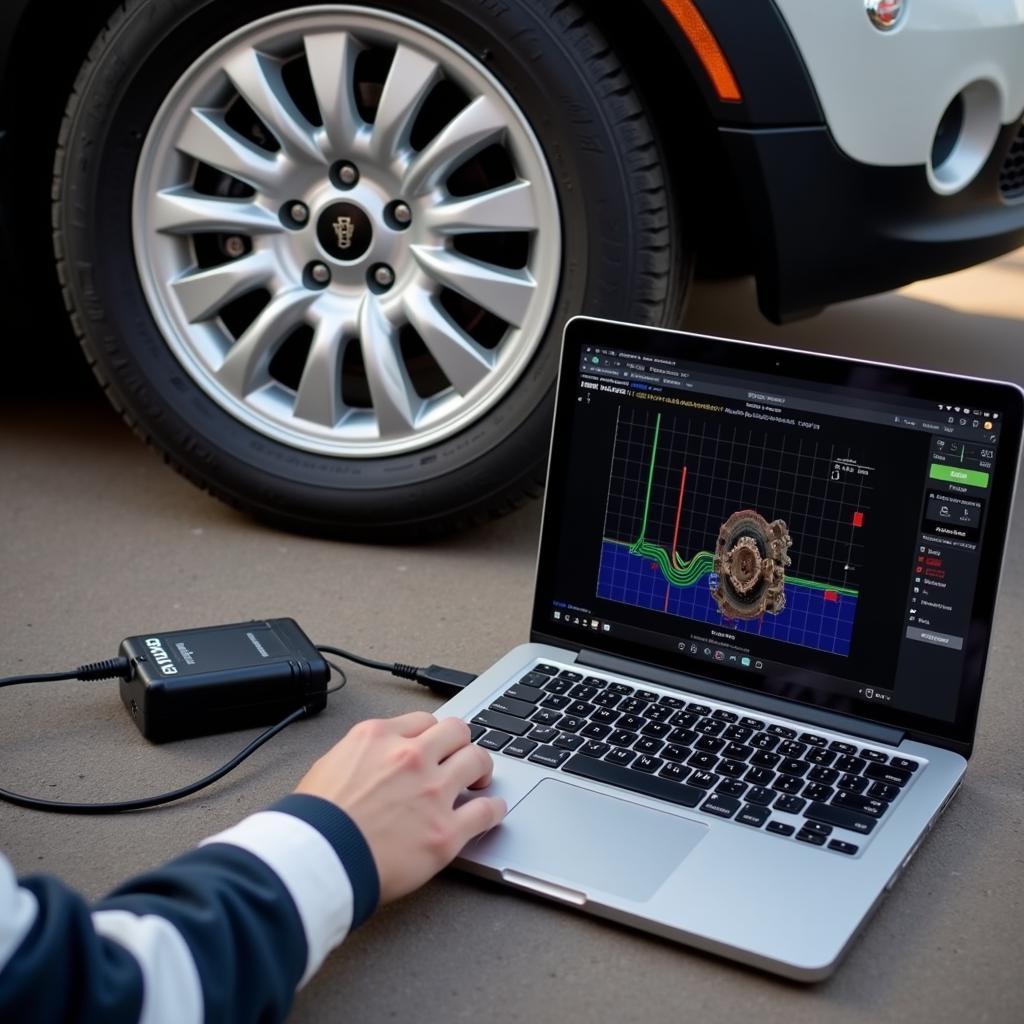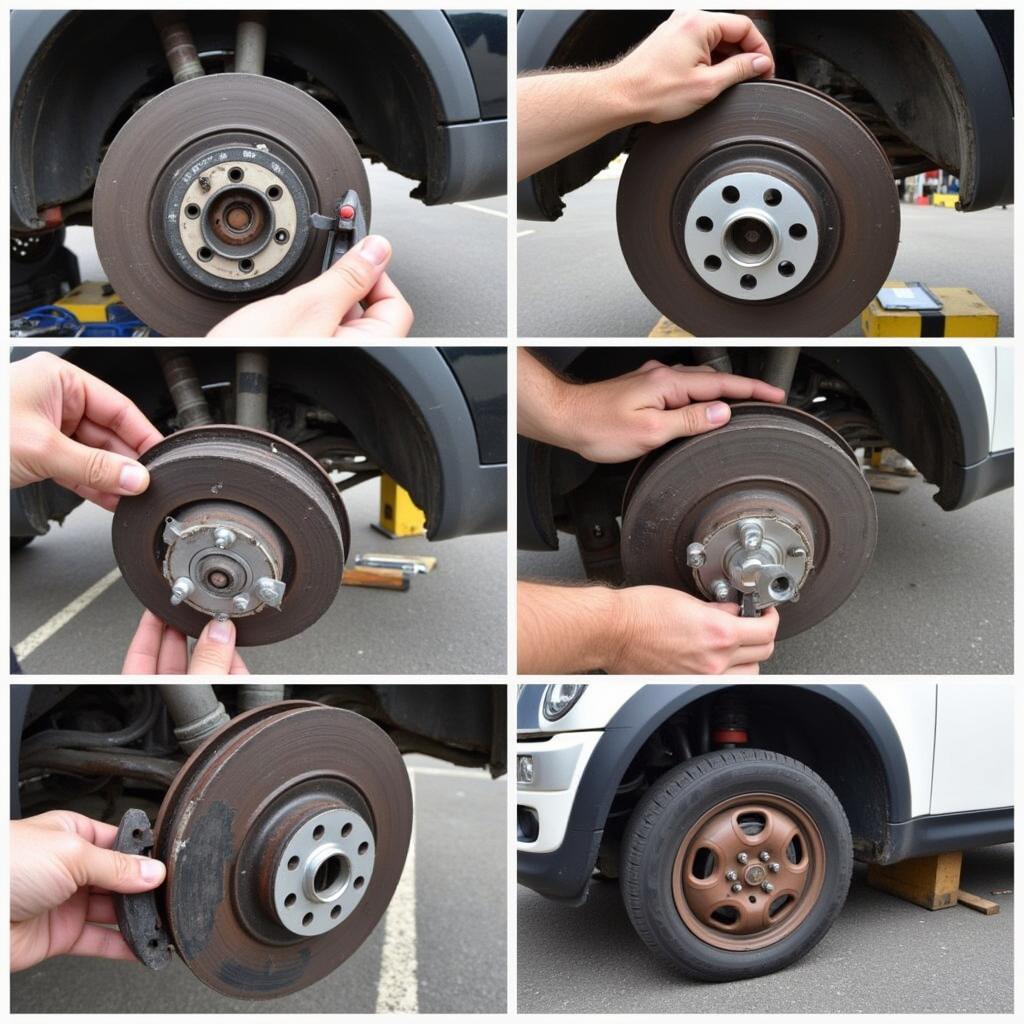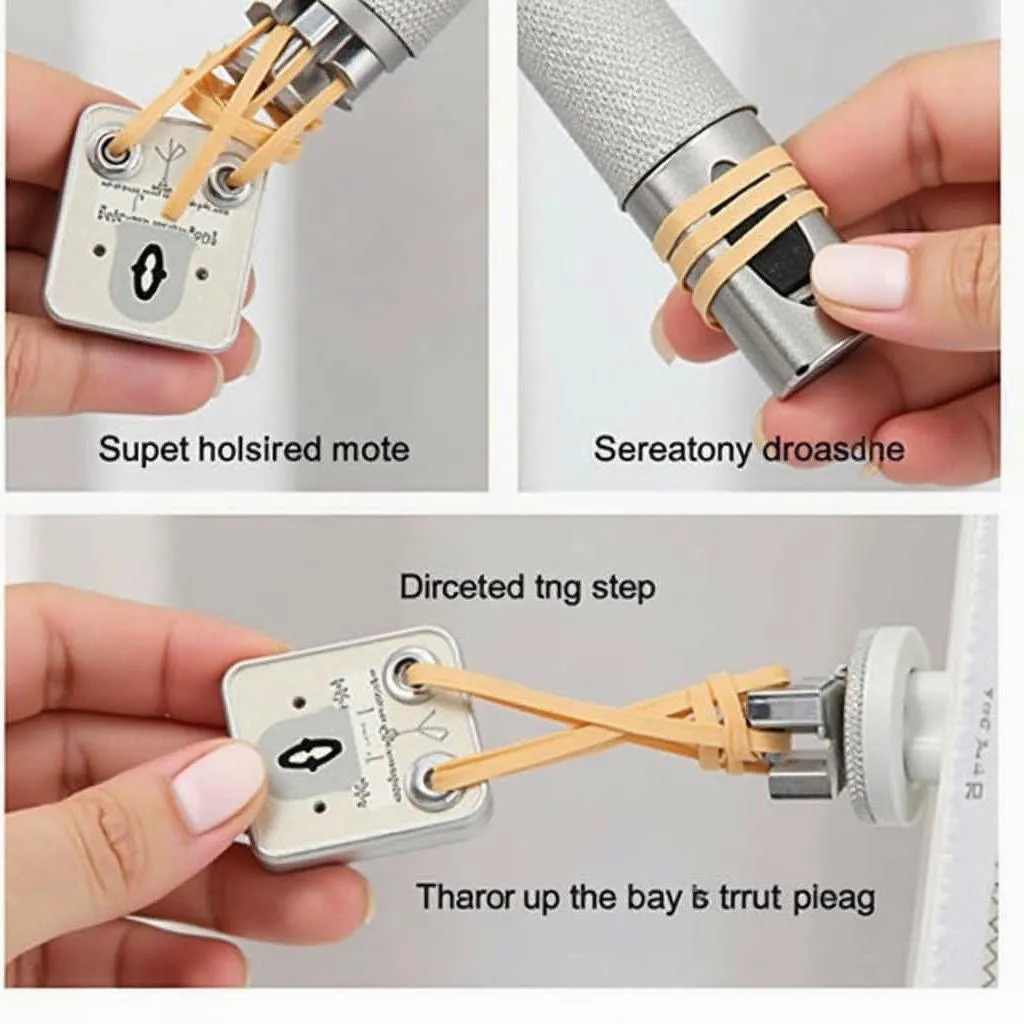The dreaded brake warning light on your 2003 Mini Cooper S can be a source of anxiety. Understanding why it illuminates and knowing how to address the issue is crucial for your safety and the longevity of your vehicle. This article provides a comprehensive guide to troubleshooting and resolving the brake warning light problem in your 2003 Mini Cooper S.
If you’re experiencing a brake warning light issue with your Mini Cooper, you might find helpful information on resetting the brake pad warning light in articles like 2003 mini cooper brake pad warning light reset.
Understanding the Brake Warning Light
The brake warning light is part of your Mini Cooper S’s complex safety system. Its illumination indicates a potential problem within the braking system, ranging from low brake fluid to more serious issues like a malfunctioning ABS system. Ignoring this warning can lead to dangerous driving conditions and costly repairs.
Common Causes of the Brake Warning Light
Several factors can trigger the brake warning light in a 2003 Mini Cooper S. These include:
- Low Brake Fluid: This is the most common culprit. A leak in the brake lines or worn brake pads can cause the fluid level to drop, triggering the warning light.
- Worn Brake Pads: Brake pads have wear indicators that activate the warning light when they reach a certain thickness.
- Faulty Brake Sensor: The sensor that monitors the brake fluid level or pad thickness can malfunction, causing the light to illuminate even if there’s no actual problem.
- ABS Issues: Problems with the Anti-lock Braking System (ABS), such as a faulty wheel speed sensor or a problem with the ABS module itself, can also trigger the brake warning light.
- Parking Brake Engaged: Sometimes, the simplest explanation is the correct one. Ensure the parking brake is fully disengaged.
 Checking the brake fluid reservoir in a 2003 Mini Cooper S
Checking the brake fluid reservoir in a 2003 Mini Cooper S
Troubleshooting the Brake Warning Light
Before rushing to a mechanic, you can perform some basic troubleshooting steps to identify the potential cause.
- Check the Parking Brake: Make sure the parking brake is fully released.
- Inspect the Brake Fluid Level: Locate the brake fluid reservoir under the hood and check the fluid level. If it’s low, top it off with the correct type of brake fluid.
- Visually Inspect the Brake Pads: If possible, look at the brake pads through the wheel spokes. If they appear thin, they likely need replacement.
If the brake warning light persists after these checks, it’s time for a more in-depth diagnosis. You can check resources like articles on the brake warning light in a Mini Cooper, which often offer troubleshooting tips brake warning light mini cooper.
Diagnosing and Repairing the Issue
For more complex issues, diagnostic tools and specialized knowledge are required. This is where remote diagnostic services, programming, and software installations become invaluable.
Remote Diagnostics and Software Solutions
Modern technology allows technicians to diagnose and even repair some brake system problems remotely. This involves connecting your car’s onboard diagnostic system to a computer via a specialized interface. The technician can then read error codes, monitor sensor data, and even perform software updates or resets to address certain issues.
“Remote diagnostics can save time and money,” says John Smith, Automotive Electrical Engineer at Acme Auto Solutions. “By identifying the root cause remotely, we can often avoid unnecessary trips to the workshop and quickly resolve the problem.”
 Performing a diagnostic scan on a Mini Cooper S brake system
Performing a diagnostic scan on a Mini Cooper S brake system
Preventing Future Brake Warning Light Issues
Regular maintenance is key to preventing brake problems and keeping that warning light off.
- Regular Brake Inspections: Have your brakes inspected at least once a year or as recommended by your car’s manufacturer.
- Timely Brake Pad Replacement: Don’t wait until the warning light comes on to replace your brake pads. Replace them preemptively to avoid further issues.
- Brake Fluid Flushes: Brake fluid absorbs moisture over time, which can reduce its effectiveness. Regular brake fluid flushes are essential to maintain optimal braking performance.
“Preventative maintenance is the best way to avoid costly repairs down the road,” adds Jane Doe, Senior Mechanic at Reliable Auto Repairs. “Regular checks and timely replacements can significantly extend the life of your braking system.”
 Replacing brake pads on a 2003 Mini Cooper S
Replacing brake pads on a 2003 Mini Cooper S
Conclusion
The brake warning light in your 2003 Mini Cooper S should never be ignored. Understanding its causes and taking appropriate action can ensure your safety and prevent costly repairs. Utilizing remote diagnostic services and software solutions can offer efficient and effective solutions. Remember, regular maintenance is the best way to avoid future brake issues and keep your 2003 Mini Cooper S running smoothly. For other model years, such as a 2008 Mini Cooper, you might find specific instructions on resetting the brake warning light helpful 2008 mini cooper brake warning light reset. Another resource that might be helpful, although for a different vehicle, is information on the 2003 Passat brake fault warning 2003 passat brake fault warning.

